Find Help
More Items From Ergsy search
-
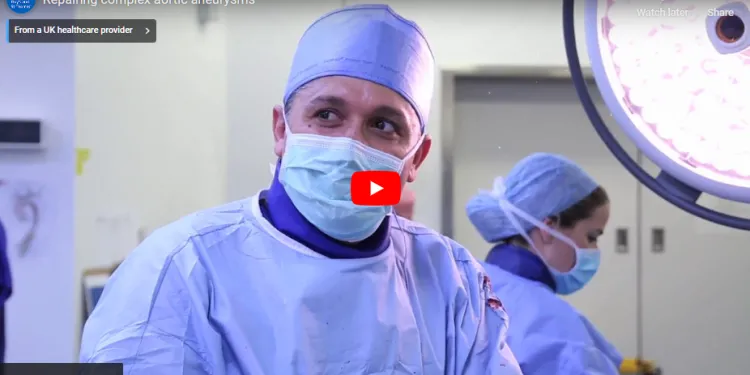
Repairing complex aortic aneurysm
Relevance: 100%
-
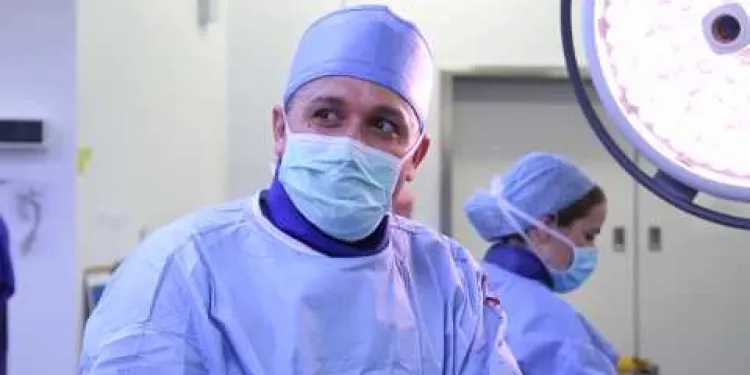
Repairing complex aortic aneurysms
Relevance: 100%
-
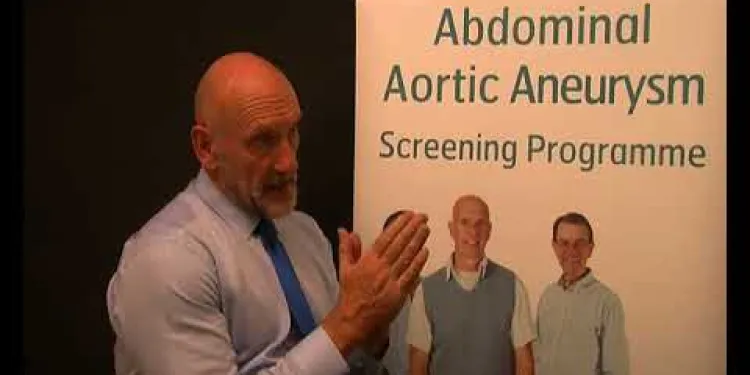
AAA (Abdominal aortic aneurysm) screening
Relevance: 63%
-
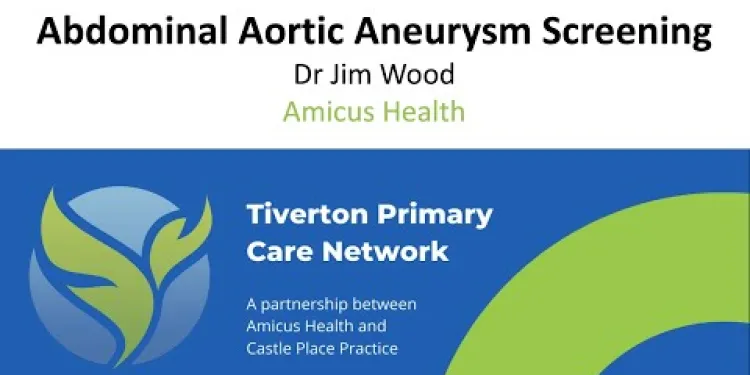
NHS Abdominal Aortic Aneurysm (AAA) Screening
Relevance: 61%
-

Eddie's Story - Abdominal Aortic Aneurysm (AAA) Screening
Relevance: 59%
-
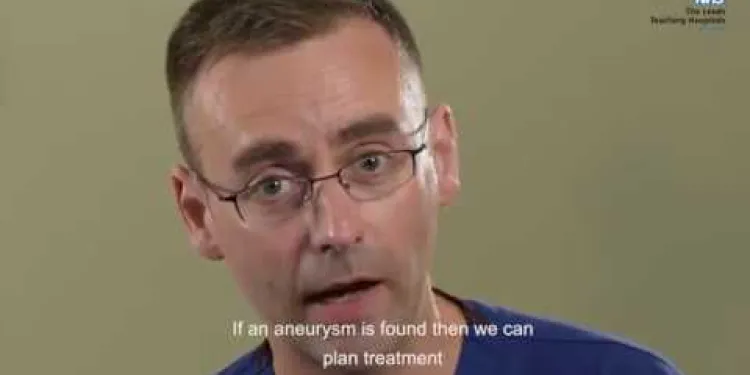
Abdominal Aortic Aneurysm (AAA) screening programme
Relevance: 58%
-
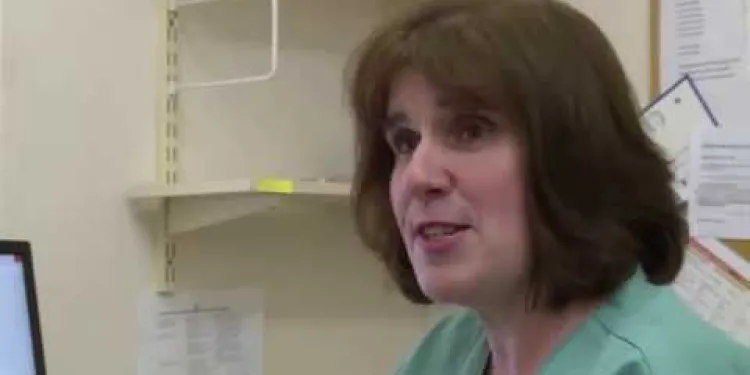
Your abdominal aortic aneurysm (AAA) screening appointment
Relevance: 56%
-

Survivor of an Abdominal Aortic Aneurysm rupture appeals for men to take up NHS Screening Programme.
Relevance: 53%
-
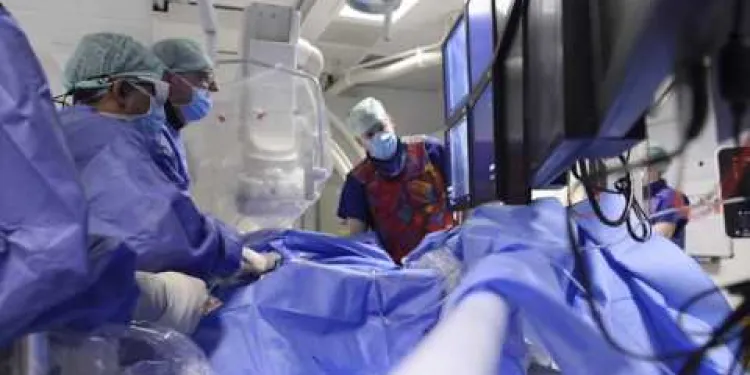
What is it like having a Transcutaneous Aortic Valve Implant (TAVI)?
Relevance: 28%
-

What is complex sleep apnea syndrome?
Relevance: 26%
-

What is complex sleep apnea syndrome?
Relevance: 26%
-
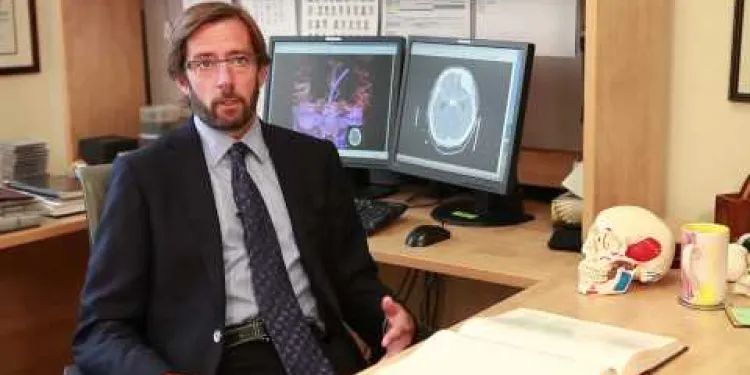
What is a Subarachnoid Hemorrhage?
Relevance: 11%
-

Health Screenings You Should Know About
Relevance: 10%
-
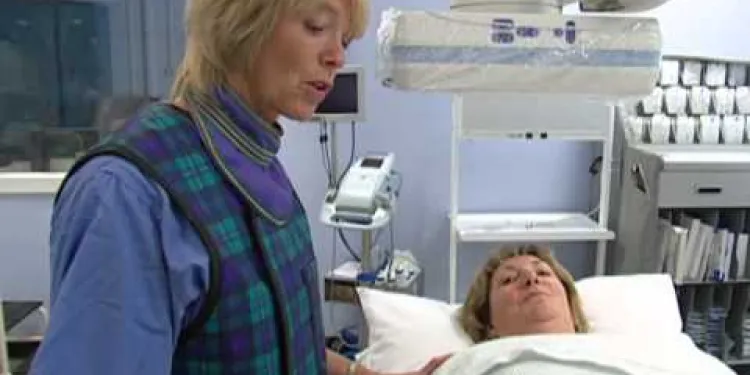
Having a CT Angiogram
Relevance: 8%
-
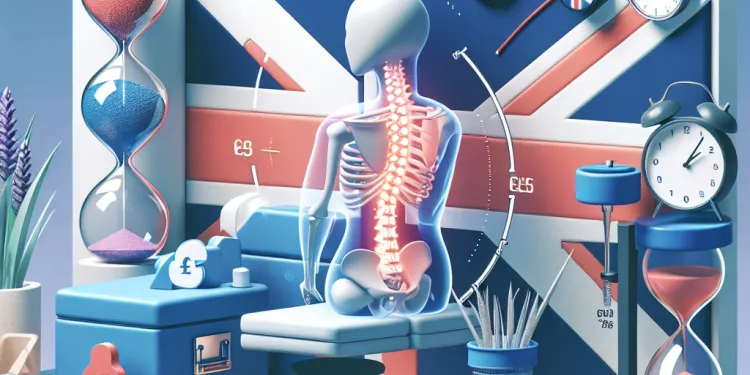
How long does a chiropractic session usually take?
Relevance: 7%
-

How do cognitive changes in older adults influence driving risk?
Relevance: 7%
-

What is heart valve disease?
Relevance: 7%
-

What causes heart failure?
Relevance: 7%
-

How long do boundary disputes typically take to resolve?
Relevance: 7%
-

What are the main types of sleep apnea?
Relevance: 7%
-

What are the administrative costs of a wealth tax?
Relevance: 7%
-

How long does the mis-sold car finance complaints process take?
Relevance: 6%
-
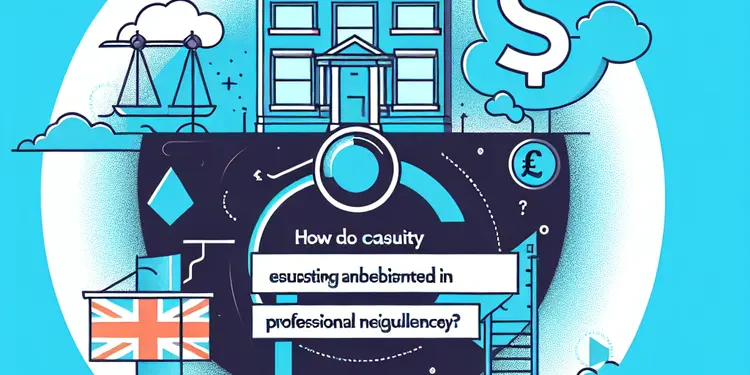
How is causation established in professional negligence?
Relevance: 6%
-

Is the Pension Wise service reliable for pension advice?
Relevance: 6%
-

What is sleep apnoea?
Relevance: 6%
-

What is the importance of a pension advisor's accreditation?
Relevance: 5%
-

Is arbitration a viable option for resolving director disputes?
Relevance: 5%
-

Why is high blood pressure called a 'silent killer'?
Relevance: 5%
-

How long does the tribunal process typically take?
Relevance: 5%
-

Do I need a lawyer to claim money back?
Relevance: 5%
-

Can high blood pressure lead to other health problems?
Relevance: 5%
-

Helen Starkie, Bath Solicitor for Wills and Probate Law
Relevance: 5%
-

Are there specific banking services more prone to opaque fee structures?
Relevance: 4%
-

Turner syndrome: Beyond the classic XO phenotype
Relevance: 4%
-

Why is it challenging to fix water leaks in the UK?
Relevance: 4%
-

Magistrates in the Family Court: A Private Law Case
Relevance: 4%
-

Is there a genetic component to autism?
Relevance: 4%
-

Understanding Your Rights in Divorce Proceedings
Relevance: 4%
-
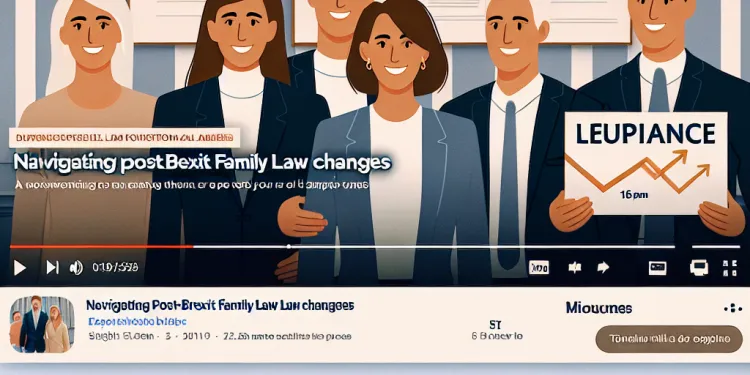
Navigating Post-Brexit Family Law Changes
Relevance: 4%
-

Have there been fictional variants used in media discussions before?
Relevance: 4%
Repairing Complex Aortic Aneurysm
Understanding Complex Aortic Aneurysms
An aortic aneurysm is a severe medical condition characterized by an abnormal bulging or dilation of the aorta, the body's main artery. When an aneurysm becomes complex, it often involves multiple sections of the aorta or occurs near critical branches, making it particularly challenging to treat. This condition requires significant medical intervention to prevent life-threatening complications such as rupture or dissection.Diagnosis and Assessment
In the United Kingdom, diagnosing a complex aortic aneurysm involves advanced imaging techniques such as computed tomography (CT) scans, magnetic resonance imaging (MRI), and echocardiography. These tools help vascular surgeons assess the size, location, and extent of the aneurysm. Patients are often referred to specialized vascular clinics, where multidisciplinary teams tailor the most appropriate treatment plans.Endovascular Aortic Repair (EVAR)
Endovascular Aortic Repair (EVAR) is a minimally invasive procedure and a common method for repairing complex aortic aneurysms. Surgeons insert a stent-graft through a small incision in the groin, navigating it to the site of the aneurysm using imaging guidance. Once in place, the stent-graft reinforces the weakened section of the aorta, reducing the risk of rupture.Open Surgical Repair
Open surgical repair is another option, particularly when the aneurysm's location or structure makes endovascular techniques impractical. This traditional method involves a large incision in the abdomen or chest, followed by the removal of the aneurysmal segment and replacement with a synthetic graft. Although open surgery has a longer recovery time, it is sometimes necessary for complex cases.Postoperative Care and Recovery
Postoperative care is crucial for patients who undergo repair of a complex aortic aneurysm. Regular follow-up appointments and imaging tests ensure the success of the repair and monitor for potential complications. In the UK, patients benefit from access to high-quality NHS resources and support groups that provide guidance and emotional support throughout the recovery process.Preventive Measures and Lifestyle Changes
Preventing aortic aneurysms from developing or recurring involves adopting a heart-healthy lifestyle. This includes managing blood pressure, quitting smoking, maintaining a balanced diet, and engaging in regular physical activity. Public health initiatives in the UK emphasize the importance of these preventive measures to reduce the incidence of aortic aneurysms and promote vascular health. By understanding the intricacies of complex aortic aneurysms and the available treatment options, patients and healthcare providers in the United Kingdom can work together to achieve the best possible outcomes.Repairing Complex Aortic Aneurysm
Understanding Complex Aortic Aneurysms
An aortic aneurysm is when the aorta, the biggest artery in the body, has a bulging area. This can be very serious. When it's complex, it involves different parts of the aorta or is near important branches. It's hard to treat and needs special medical care to stop it from bursting.Diagnosis and Assessment
In the UK, doctors use special scans, like CT, MRI, and echocardiography, to find out if someone has a complex aortic aneurysm. These scans help doctors see how big and where the aneurysm is. Patients usually go to special clinics where a team of experts decide the best way to treat it.Endovascular Aortic Repair (EVAR)
Endovascular Aortic Repair (EVAR) is a way to fix the aneurysm without major surgery. Doctors make a small cut in the groin and put a special tube called a stent-graft to make the aorta strong again and prevent it from bursting. They use images on a screen to guide them.Open Surgical Repair
Sometimes, doctors need to do an open surgery. This means making a big cut in the tummy or chest to take out the bad part of the aorta and put in a new piece. This type of surgery needs more time to heal but is needed in some cases.Postoperative Care and Recovery
After surgery, it's important for patients to have regular check-ups and scans to make sure everything is okay. In the UK, people can get help from the NHS and support groups. These groups give good advice and help patients feel better as they recover.Preventive Measures and Lifestyle Changes
To stop aneurysms from happening, it's important to live healthy. This means keeping blood pressure normal, not smoking, eating healthy food, and being active. In the UK, people learn how to stay healthy to keep their blood vessels strong. By knowing about aortic aneurysms and how to treat them, patients and doctors in the UK can work together to help people get better.Frequently Asked Questions
What is an aortic aneurysm?
An aortic aneurysm is an abnormal bulge or ballooning in the wall of the aorta, the largest blood vessel in the body, which can lead to life-threatening complications if it ruptures.
What are the types of aortic aneurysms?
The two main types of aortic aneurysms are thoracic aortic aneurysms, which occur in the chest area, and abdominal aortic aneurysms, which occur in the abdomen.
What causes aortic aneurysms?
Causes may include atherosclerosis (hardening of the arteries), high blood pressure, genetic conditions, infections, and trauma. Smoking and family history can also increase the risk.
How are aortic aneurysms diagnosed?
Aortic aneurysms are often diagnosed through imaging tests such as ultrasound, computed tomography (CT) scans, or magnetic resonance imaging (MRI) scans.
What are the treatment options for aortic aneurysms?
Treatment options include regular monitoring, medication to control blood pressure, and surgery to repair or replace the affected section of the aorta.
What is a complex aortic aneurysm?
A complex aortic aneurysm involves a more complicated section of the aorta, often affecting branches of the aorta or having a difficult location, making surgical repair more challenging.
What are the surgical options for repairing complex aortic aneurysms?
Surgical options include open surgery, where the aneurysm is repaired through a large incision, and endovascular surgery, which is a minimally invasive procedure using catheters and stents.
What is endovascular aneurysm repair (EVAR)?
EVAR is a minimally invasive surgical procedure used to repair an aneurysm by inserting a stent-graft through small incisions in the groin to reinforce the weakened section of the aorta.
What are the risks of complex aortic aneurysm surgery?
Risks can include bleeding, infection, damage to surrounding organs or tissues, and complications related to anesthesia. There is also a risk of the aneurysm recurring.
What is the recovery time after aortic aneurysm surgery?
Recovery time can vary, but typically ranges from a few weeks to several months, depending on the type of surgery performed and the patient's overall health.
What lifestyle changes are recommended after aortic aneurysm surgery?
Patients are often advised to quit smoking, maintain a healthy diet, exercise regularly, and manage blood pressure and cholesterol levels to reduce the risk of future aneurysms.
Can aortic aneurysms be prevented?
While not all aortic aneurysms can be prevented, reducing risk factors such as smoking, managing blood pressure, and regular health check-ups can help decrease the likelihood of developing one.
What are the symptoms of an aortic aneurysm?
Many aortic aneurysms do not cause symptoms until they rupture. Symptoms of a ruptured aneurysm can include sudden, severe pain in the chest or abdomen, shortness of breath, and loss of consciousness.
Who is at higher risk for developing aortic aneurysms?
Individuals at higher risk include those over the age of 65, males, smokers, those with a family history of aneurysms, and those with conditions like hypertension and atherosclerosis.
What should you do if you suspect an aortic aneurysm?
If you suspect you have an aortic aneurysm or experience symptoms of a rupture, seek emergency medical attention immediately.
What is an aortic aneurysm?
An aortic aneurysm is when a part of the big blood vessel (called the aorta) gets too big. The aorta is like a tube that carries blood from your heart to your body. If the aorta gets too big, it can cause problems.
Here are some tips to help understand better:
- Use pictures or videos about the heart and aorta.
- Ask someone, like a doctor or a parent, to explain it to you.
- Use simple words and take it slow.
An aortic aneurysm is like a big bump in the wall of the aorta. The aorta is the biggest blood vessel in your body. If this bump bursts, it can cause very serious problems.
What are the types of aortic aneurysms?
An aortic aneurysm is a big swelling or bulge in the aorta. The aorta is a big blood tube in your body. There are two main kinds of aortic aneurysms:
- Abdominal aortic aneurysm: This happens in the part of the aorta going through your tummy.
- Thoracic aortic aneurysm: This happens in the part of the aorta going through your chest.
To help understand better, you can use simple pictures or ask someone to explain it with you. You can also find videos to watch. If you need more help, ask a teacher or a friend.
The aorta is a big blood tube in our body. Sometimes it can swell up. This swelling is called an aneurysm. There are two kinds of aortic aneurysms.
The first kind happens in the chest. It is called a thoracic aortic aneurysm.
The second kind happens in the tummy. It is called an abdominal aortic aneurysm.
To help understand or remember this, you can use pictures or flashcards. You can also ask someone to explain it in another way.
What makes aortic aneurysms happen?
Aortic aneurysms happen when a part of the aorta, a big blood tube in your body, gets weak and puffs up like a balloon. This can be dangerous.
Here are some things that can make this happen:
- Being older. As people get older, their blood tubes can get weaker.
- High blood pressure. This means the blood pushes too hard against the blood tubes.
- Smoking. Smoking can hurt your blood tubes and makes them weaker.
- Family history. If someone in your family had aortic aneurysms, you might get them too.
- Atherosclerosis. This is when fat builds up in your blood tubes, making them weak.
If reading is hard, try using a tool that reads out loud to you.
Ask someone you trust for help if you are worried about aortic aneurysms.
There are different reasons why these problems happen. One reason is when the arteries get stiff and hard. This is called atherosclerosis.
Another reason is having high blood pressure.
Some people get these problems because it runs in their family.
Infections or getting hurt (trauma) can also cause these problems.
Smoking makes these problems more likely, too.
If you need help understanding this, you can use text-to-speech tools to read it out loud.
Breaking down information with pictures or diagrams can also help.
How do doctors find out if someone has an aortic aneurysm?
Doctors use special tools to see inside the body. This helps them find aneurysms. An aneurysm is a weak spot in a blood vessel.
Tools that doctors might use include:
- Ultrasound: A machine that uses sound waves to make pictures inside the body.
- CT Scan: A big machine that takes many X-ray pictures of the body.
- MRI: A machine that uses magnets to take pictures of the inside of the body.
If you are going to have these tests, you can ask your doctor to explain them to you. You can also have a friend or family member with you to help you feel safe.
Doctors use special pictures to find aortic aneurysms. These pictures come from tests like ultrasound, CT scans, or MRI scans. These tests help the doctors see inside the body.
How can doctors fix an aortic aneurysm?
Doctors have ways to help if you have an aortic aneurysm. They might:
- Watch it with regular check-ups to see if it gets bigger.
- Give you medicine to keep your heart and blood pressure healthy.
- Do surgery to fix it if it becomes too big or dangerous.
Ask your doctor to explain things clearly. You can also bring a trusted person to help understand.
There are different ways to help. You might need to see the doctor often. You could take medicine to keep your blood pressure normal. Sometimes, surgery is needed to fix or change the part of the aorta that is not healthy.
What is a complex aortic aneurysm?
An aortic aneurysm is a big bump in a blood tube in your body. This tube is called the aorta. It carries blood from your heart to the rest of your body.
A complex aortic aneurysm is harder to take care of. Doctors need special tools or ways to help you feel better.
If you have questions or need help, ask a doctor or an adult you trust.
A complicated aortic aneurysm is a problem with a part of the aorta, which is a big blood tube in your body. This problem can be in a tricky spot or affect other little tubes that come out of the aorta. This makes it harder for doctors to fix it with surgery.
How can doctors fix a big problem with the aorta using surgery?
Doctors can use special surgery to fix a big problem in the aorta. The aorta is a very important tube in the body that carries blood. When the aorta gets too big and weak, it needs help.
There are different ways doctors can help fix it with surgery:
- Open surgery: The doctor makes a cut to fix the aorta.
- Endovascular repair: The doctor uses a tiny tube inside the blood vessel to fix it.
Doctors will choose the best way to fix the aorta. They think about what is best for each person.
If you want to understand more, you can:
- Ask a doctor to explain in simple words.
- Look at pictures or videos that show how the surgery works.
Surgery choices include open surgery and endovascular surgery. In open surgery, doctors fix the aneurysm by making a big cut. In endovascular surgery, doctors fix the aneurysm through small cuts using thin tubes and special tools called stents.
What is endovascular aneurysm repair (EVAR)?
Endovascular aneurysm repair, or EVAR, is a medical procedure to fix a bulge in a blood vessel. This bulge is called an aneurysm. Doctors use a tube (called a stent) to make the blood vessel strong again.
Tips and tools to help understand:
- Use simple words to explain hard ideas.
- Look at pictures or videos about EVAR to see how it works.
- Ask someone to explain it to you with easy words.
- Use a computer program to read the words out loud.
EVAR is a simple surgery to fix a problem called an aneurysm. Doctors use a small tube called a stent-graft. They put it in through a tiny cut near your leg to make the weak part of a big blood tube, called the aorta, stronger.
What are the risks of tricky aortic aneurysm surgery?
Surgery for a tricky aortic aneurysm can be dangerous. Here are some risks:
- You might bleed a lot during the surgery.
- There could be problems with your heart.
- You might get an infection.
- There could be trouble with your kidneys.
- You may feel numb or weak in some parts of your body.
Talk to your doctor about these risks. It can help to have a friend or family member with you. They can listen and ask questions too.
If you need help understanding this information, ask your doctor to explain it simply. You can also use pictures or videos to help you understand what's happening.
There are some risks. You could have bleeding, infection, or damage to nearby body parts. Problems can also happen because of the medicine that makes you sleep during surgery. The problem might come back too.
How long does it take to get better after aortic aneurysm surgery?
How long it takes to get better can be different for everyone. It usually takes a few weeks to a few months. It depends on what kind of surgery you had and how healthy you are.
What should you do differently after aortic aneurysm surgery?
After surgery, there are some things you can do to stay healthy.
- Eat Healthy Foods: Try to eat more fruits and vegetables. Avoid foods that are very salty or fatty.
- Exercise Gently: Do light activities like walking. Ask your doctor what exercises are okay.
- Quit Smoking: If you smoke, try to stop. Smoking is not good for your heart.
- Take Your Medicine: Always take the medicines your doctor gives you.
- Go to Check-Ups: Visit your doctor regularly to make sure you are healing well.
Here are some tools to help you:
- Alarms: Set alarms on your phone to remember medicine or appointments.
- Support Groups: Talk to others who had the same surgery.
- Apps: Use phone apps to track your food or exercise.
Doctors often tell people to stop smoking, eat healthy food, exercise often, and keep a check on blood pressure and cholesterol to lower the chance of getting aneurysms again.
Can we stop aortic aneurysms from happening?
There are ways to help stop aortic aneurysms. Here are some easy steps:
- Eat healthy: Eat fruits, vegetables, and whole grains.
- Exercise: Play, walk, or move every day.
- No smoking: Smoking is bad for your heart and blood vessels.
- Doctor check-ups: See a doctor for regular check-ups.
Ask someone to help you stay on track with these steps. You can also use reminders or apps to help you remember.
You can't always stop an aortic aneurysm from happening. But you can do things to lower the risk.
Try these:
- Don't smoke. Smoking is bad for your heart.
- Keep your blood pressure healthy. Check it often.
- Go to the doctor for regular check-ups. They can help you stay healthy.
These steps can help you stay well.
What signs show an aortic aneurysm?
The aorta is a big blood tube in your body. An aortic aneurysm is when a spot on the aorta gets bigger and swells like a balloon. Here are signs that you might have it:
- Feeling a strong beat in your belly
- Pain in your chest or back
- Feeling dizzy or weak
If you think you have these signs, tell an adult and see a doctor. Using a picture book about the body or a health app might also help you understand more.
A lot of aortic aneurysms do not show signs until they burst. When an aneurysm bursts, you might feel:
- Sudden and very bad pain in your chest or tummy
- Find it hard to breathe
- Faint or black out
If you think you might have an aneurysm, go to the doctor. A tool like a symptom checker app can help you understand your symptoms better, but always talk to a doctor.
Who is more likely to get an aortic aneurysm?
Some people have a higher chance of getting an aortic aneurysm. Here are some things that might make the risk bigger:
- Being older: As people get older, they might have a higher chance of getting an aortic aneurysm.
- Family history: If someone in your family had an aortic aneurysm, you might have a higher chance too.
- High blood pressure: People with high blood pressure have a bigger chance.
- Smoking: Smoking can make the chance higher.
- Other health problems: Some diseases can also make the risk bigger.
If you need help understanding this information, you can ask someone you trust, like a family member, a teacher, or a doctor. You can also use pictures or videos to learn more about aortic aneurysms.
People who might have a higher chance include:
- People older than 65 years
- Men
- People who smoke
- People with family members who had aneurysms
- People with health problems like high blood pressure and artery disease
To help understand better, you can:
- Use pictures or diagrams
- Ask someone to explain the words you find hard
- Break the text into smaller parts
What to do if you think you have an aortic aneurysm?
If you think you might have an aortic aneurysm, tell an adult you trust. They can help you see a doctor.
You should see the doctor right away. They will check if you have an aneurysm.
An aortic aneurysm is very serious. It is important to get help from a doctor quickly.
If you are scared, talk to a trusted adult or friend for support.
Writing your thoughts in a notebook can also help you feel better.
If you think you might have a problem called an aortic aneurysm, or if you feel any bad signs that it might have burst, tell a doctor straight away. It is very important to get help quickly.
Useful Links
- Ergsy carfully checks the information in the videos we provide here.
- Videos shown by Youtube after a video has completed, have NOT been reviewed by ERGSY.
- To view, click the arrow in centre of video.
- Most of the videos you find here will have subtitles and/or closed captions available.
- You may need to turn these on, and choose your preferred language.
- Go to the video you'd like to watch.
- If closed captions (CC) are available, settings will be visible on the bottom right of the video player.
- To turn on Captions, click settings .
- To turn off Captions, click settings again.
More Items From Ergsy search
-

Repairing complex aortic aneurysm
Relevance: 100%
-

Repairing complex aortic aneurysms
Relevance: 100%
-

AAA (Abdominal aortic aneurysm) screening
Relevance: 63%
-

NHS Abdominal Aortic Aneurysm (AAA) Screening
Relevance: 61%
-

Eddie's Story - Abdominal Aortic Aneurysm (AAA) Screening
Relevance: 59%
-

Abdominal Aortic Aneurysm (AAA) screening programme
Relevance: 58%
-

Your abdominal aortic aneurysm (AAA) screening appointment
Relevance: 56%
-

Survivor of an Abdominal Aortic Aneurysm rupture appeals for men to take up NHS Screening Programme.
Relevance: 53%
-

What is it like having a Transcutaneous Aortic Valve Implant (TAVI)?
Relevance: 28%
-

What is complex sleep apnea syndrome?
Relevance: 26%
-

What is complex sleep apnea syndrome?
Relevance: 26%
-

What is a Subarachnoid Hemorrhage?
Relevance: 11%
-

Health Screenings You Should Know About
Relevance: 10%
-

Having a CT Angiogram
Relevance: 8%
-

How long does a chiropractic session usually take?
Relevance: 7%
-

How do cognitive changes in older adults influence driving risk?
Relevance: 7%
-

What is heart valve disease?
Relevance: 7%
-

What causes heart failure?
Relevance: 7%
-

How long do boundary disputes typically take to resolve?
Relevance: 7%
-

What are the main types of sleep apnea?
Relevance: 7%
-

What are the administrative costs of a wealth tax?
Relevance: 7%
-

How long does the mis-sold car finance complaints process take?
Relevance: 6%
-

How is causation established in professional negligence?
Relevance: 6%
-

Is the Pension Wise service reliable for pension advice?
Relevance: 6%
-

What is sleep apnoea?
Relevance: 6%
-

What is the importance of a pension advisor's accreditation?
Relevance: 5%
-

Is arbitration a viable option for resolving director disputes?
Relevance: 5%
-

Why is high blood pressure called a 'silent killer'?
Relevance: 5%
-

How long does the tribunal process typically take?
Relevance: 5%
-

Do I need a lawyer to claim money back?
Relevance: 5%
-

Can high blood pressure lead to other health problems?
Relevance: 5%
-

Helen Starkie, Bath Solicitor for Wills and Probate Law
Relevance: 5%
-

Are there specific banking services more prone to opaque fee structures?
Relevance: 4%
-

Turner syndrome: Beyond the classic XO phenotype
Relevance: 4%
-

Why is it challenging to fix water leaks in the UK?
Relevance: 4%
-

Magistrates in the Family Court: A Private Law Case
Relevance: 4%
-

Is there a genetic component to autism?
Relevance: 4%
-

Understanding Your Rights in Divorce Proceedings
Relevance: 4%
-

Navigating Post-Brexit Family Law Changes
Relevance: 4%
-

Have there been fictional variants used in media discussions before?
Relevance: 4%


